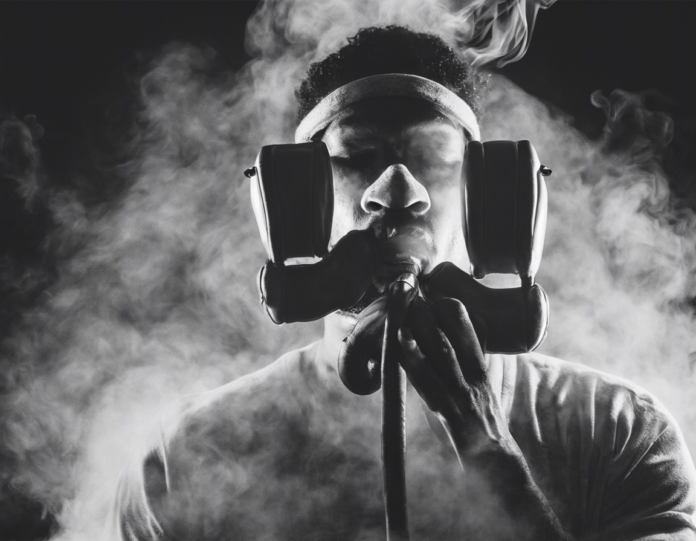Hot boxing, a popular and often controversial activity among certain demographics, is the practice of smoking marijuana in an enclosed space to intensify the effects of the drug. While some may view it as a fun and social activity, others have concerns about the potential risks and consequences associated with hot boxing. In this comprehensive guide, we will delve into all aspects of hot boxing, including its origins, methods, effects, risks, legal implications, and more. Whether you’re a seasoned participant or simply curious about this phenomenon, read on to discover everything you need to know about hot boxing.
Origins of Hot Boxing
Hot boxing has its roots in the cannabis culture and is believed to have originated in the 1980s or earlier. The practice gained popularity among marijuana users as a way to enhance the psychoactive effects of the drug by creating a cloud of smoke in a confined space. Over the years, hot boxing has evolved into a social activity that is often associated with camaraderie, relaxation, and a sense of unity among participants.
Methods of Hot Boxing
There are various methods of hot boxing, with the most common being smoking marijuana in a closed vehicle. Participants typically gather in a car, van, or other enclosed space and smoke cannabis to fill the area with smoke. Alternative methods include hot boxing in a small room, tent, or bathroom. The goal is to saturate the space with smoke to increase the concentration of THC in the air, leading to a more intense high for those involved.
Effects of Hot Boxing
The effects of hot boxing are often described as more intense and rapid compared to traditional methods of smoking marijuana. When a space is filled with smoke, participants may absorb THC not only through inhalation but also through their skin and mucous membranes. This can result in a quicker onset of the high, as well as a more potent and longer-lasting experience. Additionally, the communal aspect of hot boxing can contribute to a sense of bonding and togetherness among participants.
Risks Associated with Hot Boxing
While hot boxing can be an enjoyable experience for some, it is important to be aware of the potential risks involved. Exposure to high levels of secondhand smoke in an enclosed space can lead to respiratory irritation, coughing, wheezing, and other respiratory symptoms. Prolonged exposure to smoke, especially in poorly ventilated areas, can also increase the risk of lung and respiratory issues over time. Furthermore, hot boxing in a vehicle can impair the driver’s ability to operate the vehicle safely, posing a significant risk of accidents.
Legal Implications of Hot Boxing
The legality of hot boxing varies depending on local laws and regulations regarding marijuana use. In regions where marijuana is legal for recreational purposes, hot boxing in private residences may be allowed as long as it does not disturb neighbors or violate public smoking laws. However, hot boxing in public spaces, vehicles, or areas where smoking is prohibited can result in fines, citations, or other legal consequences. It is essential to understand and comply with local laws to avoid legal issues related to hot boxing.
Social and Cultural Perspectives
Hot boxing is not just a recreational activity but also holds cultural significance for many cannabis enthusiasts. Some view hot boxing as a ritualistic practice that fosters a sense of unity and connection with others. In certain communities, hot boxing is seen as a way to celebrate marijuana culture and bond with friends over a shared love of the plant. Despite its recreational nature, hot boxing can also be a platform for discussions about legalization, social stigmas, and the medicinal benefits of marijuana.
Health Considerations
From a health standpoint, hot boxing raises concerns about exposure to secondhand smoke and its potential impact on respiratory health. Individuals with respiratory conditions such as asthma or chronic obstructive pulmonary disease (COPD) may be particularly sensitive to the effects of hot boxing and should exercise caution or avoid participating altogether. Additionally, pregnant women and individuals with compromised immune systems should refrain from hot boxing due to the potential risks to their health and well-being.
Alternatives to Hot Boxing
For those who wish to avoid the risks associated with hot boxing, there are alternative ways to enjoy marijuana without the need to create a smoke-filled environment. Vaporizing cannabis is a popular method that reduces exposure to harmful byproducts of combustion while still delivering the desired effects. Edibles, tinctures, and topicals are also viable options for consuming marijuana without the need for smoking. These alternatives provide a safer and more discreet way to enjoy the benefits of cannabis without the potential drawbacks of hot boxing.
Frequently Asked Questions (FAQs) about Hot Boxing:
1. Is hot boxing safe?
Hot boxing poses risks related to secondhand smoke exposure, respiratory issues, and impaired driving, among others. It is essential to consider these risks and make an informed decision before participating.
2. Can hot boxing lead to a positive drug test?
Yes, inhaling secondhand marijuana smoke in a hot box environment can result in traces of THC being detectable in a drug test, although the levels are typically lower than direct consumption.
3. How long should a hot box session last?
The duration of a hot box session can vary depending on personal preferences and tolerance levels. It is advisable to pace oneself and take breaks to avoid overexposure to smoke.
4. What are the legal consequences of hot boxing?
Hot boxing in public spaces, vehicles, or areas where smoking is prohibited can lead to fines, citations, or other legal penalties. It is important to adhere to local laws and regulations.
5. Can hot boxing be done with other substances?
While hot boxing is traditionally associated with marijuana use, some individuals may engage in co-use of marijuana with other substances. It is crucial to be aware of the risks associated with combining different drugs.
6. How can I minimize the risks of hot boxing?
To minimize the risks of hot boxing, consider ventilating the space, taking breaks, and being mindful of the health and safety of all participants. Open windows or doors to improve air circulation and reduce exposure to smoke.
7. Is hot boxing addictive?
The potential for addiction to hot boxing itself is low. However, individuals with a history of substance abuse or addictive behaviors should be cautious about engaging in activities that involve drugs.
8. Can hot boxing be done with legal marijuana products?
Hot boxing can be done with legally purchased marijuana products in regions where cannabis is permitted for recreational or medicinal use. It is still important to adhere to local laws and consume responsibly.
9. What are the primary reasons people hot box?
People may hot box for various reasons, including enhancing the effects of marijuana, socializing with friends, celebrating cannabis culture, and bonding over a shared experience.
10. Are there age restrictions for hot boxing?
As hot boxing involves the consumption of marijuana, age restrictions related to cannabis use apply. In regions where marijuana is legal, individuals must be of legal age to purchase and consume marijuana products.
In conclusion, hot boxing is a complex and multifaceted activity that holds different meanings for individuals across various communities. Whether viewed as a recreational pastime, a cultural tradition, or a social ritual, hot boxing involves unique considerations and potential risks that should be taken into account. By understanding the origins, methods, effects, risks, legal implications, and alternatives associated with hot boxing, individuals can make informed choices about their participation in this practice. Remember to prioritize health and safety when engaging in activities involving marijuana and respect local laws and regulations to mitigate any potential consequences.









